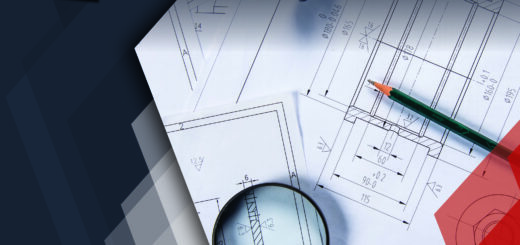All about Air Purification – Need, Origin & Trend Analysis
World Health Organization (WHO) evaluated in 2018 that nearly 7 million people die every year due to inhaling fine particles presented in polluted air. Thereby leading to diseases such as stroke, heart disease, lung cancer, chronic obstructive pulmonary diseases and respiratory infections, including pneumonia. The WHO estimated that almost 700,000 children die each year due to air pollution.
The major air pollutants are vehicular and industrial pollution, which in turn is closely linked to climate change due to global warming.
To eliminate the health hazards caused by impure air quality, air purifiers have come into existence. Essentially, an air purifier or air cleaner is a device that removes the contaminants, including tobacco smoke present in the air. They are especially useful for people suffering from allergy and asthma. Rapidly rising pollution levels and increasing airborne diseases are the key factors driving the growth of global air purifier market, which is estimated to grow at a CAGR of over 32.4% during the forecast period, 2018-2024.
Table of Contents
Origin of Air Purifiers
The very first air-purifying apparatus was developed by Lewis P. Haslett and received its patent in 1848. In the 1850s, John Stenhouse used charcoal filters as an air purifier. Also. this led to the development of gas masks which were used in the London industries as a personal filter to protect workers from toxic gases. In 1940, the US Atomic Energy Commission invented the HEPA filter to clean air contaminated with radioactive particles. After World War II, the HEPA filter was released to the public and is now majorly being used by air purifier companies as a heavy-duty filtration device.
Also Read: How Start-ups and MSMEs can Innovate and Lead India into a Green Future
First Indoor Air Purifier for Air Purification
In 1960s, a German engineer with his brother developed a simple air purifier system. Also, this system comprised of a filter pad and used magnets to attach the air filters. The filter trapped the dust present in the air. Moreover, his purifying system became the first air purifier system used within households. During the use of this system, consumers noticed that the filter system can reduce asthma and allergy symptoms.
Air purifiers today have developed from an early gas mask to suit the need of early factory worker to the self-standing systems for cleaning the air, as the very air we breathe has become hazardous.
One can group the current air purifier technologies into two categories:
- Air Purifiers with Filters (Pre-filters, HEPA Filters, Activated Carbon Filters, Permanent/Washable Filters)
- Filter-less Air Purifiers (Air Ionizers, Electrostatic Precipitator, Ozone Generators, Thermodynamic Sterilization, Ultraviolet Germicidal Irradiation, Ultraviolet Germicidal Irradiation, Photocatalytic Oxidation Cleaners)
Currently, HEPA purifiers rule the air purifier market. They may contribute to market growth during the forecast period as well. Activated carbon and ozone-based purifiers are expected to experience growth. Ultraviolet germicidal irradiation, HEPA Filter, Activated Carbon and Ionizer purifiers are the most common air purifiers for home and commercial use -helping in asthma and allergy. Furthermore, photocatalytic oxidation (PCO) is one of the emerging technologies. PCO cleaners also use UV light to react with a catalyst – TiO2. The reaction oxidizes bacteria, viruses, fungi, odors, and volatile organic compounds and breaks the pollutants down into harmless carbon dioxide and water molecules in order to make the air cleaner.Major Players in Air Purification / Purifier Market
- Panasonic
- Daikin Industries
- Gree Electric Appliances
- LG Electronics
- Samsung Electronics
- Sharp
- Samsung
Patent Filing Trend for Air Purification
As you know, Lewis P was the developer of very first air-purifying apparatus. Haslett and received its patent in 1848 . As time progressed, development of more effective types of air purifying devices became more important. In 1990s an inventor Frank, worked with a team of engineers from Switzerland and Germany in order to make highly effective consumer air purifiers in the world and they built the first room air purifier (IQAir HealthPro Plus. This air purifier beat its competitors as a successful product for relieving asthma and allergy symptoms.

Patent filing in the air purifying technology have taken a sudden leap from 2012 onwards. During 2013-2016, there was a drastic increment in the patent filings of nearly 350% as compared to the last four years.
Majority of the research in recent years focused on the undermentioned challenges:
- Improving the activated carbon absorption.
- Improving performance and reducing cost of catalytic material.
- Improvement in removal of moisture content carried in the outdoor air during purification.
- Improving filter’s life to eliminate the difficulty of replacement and cost.
- Improvement in filter quality by reducing the size of the filter.
- Improvement in elimination of bad odour.
- Reducing the amount of Ozone and Ions released during purification.
China has seen the most patent filing followed by Japan, Korea and the United States. It does 50% of the total patent filing to make the major market for this technology.
Concluding Comments for Air Purification
Air purifiers have gone through a long process of research & development over the decades – from the basic mouth and nose air purifying device to advanced self-standing purifying systems used today. The need for the air purifiers grow with increase in population. It will be interesting to see the further advancements in this technology.
Sagacious IP offers customised solutions to meet your individual needs. Based on our long standing expertise, we strategically address your business challenges and then propose novel solutions. Our consulting approach rather than a report-only tactic drives actionable results for businesses to adapt and grow.
– Prabha Shankar (Engineering Searching) and The Editorial Team.
Having Queries? Contact Us Now!
"*" indicates required fields




